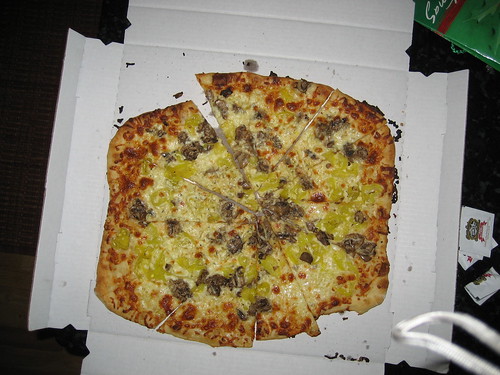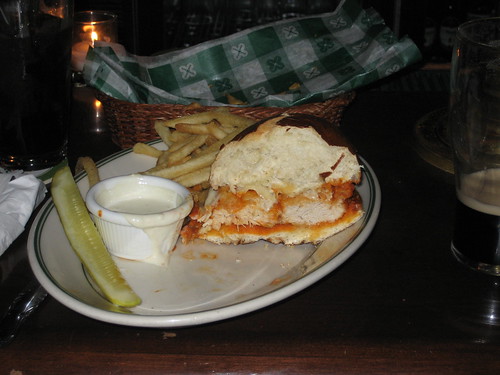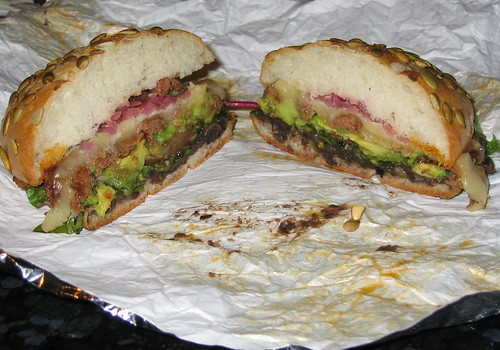I sit here on the eve of Thanksgiving reflecting on how timely my reading of this book has been. It’s already been a highly emotional time in my college football fandomania and I have a feeling that the emotions will build into a frothy frenzy three days hence on Saturday. You see, Bo Schembechler died last Friday on the eve of the once-in-a-lifetime clash of #1 Ohio State vs. #2 Michigan – and this Saturday, Notre Dame plays USC in easily the most important game that Notre Dame has played in over a decade. I am fortunate that my reading of this book coincides with these momentous occasions because the confluence has intensified my emotions and awareness of how this game affects my life.
Because of where I grew up, I really had no choice but to be a fan of college football. Check out the link below. Do you see that town right smack-dab in the center of the trip from Columbus to Ann Arbor called Findlay, OH?
Columbus to Ann Arbor
That, my friends, is my hometown and I spent the first 18 years of my life there. It is 95 miles from Ann Arbor and 92 miles from Columbus, and you gotta go through it if you are making the trip on gameday. It is the epicenter of one of the greatest sporting rivalries ever – Ohio State vs. Michigan. It is a town influenced as much by the Detroit-centered auto industry as it is by the rich agricultural heritage of Ohio. I think fandom is about 67/33 in favor of the Buckeyes, but my brother says its 80/20.
If that wasn’t enough to burn the passion into my brain, then I went to the University of Notre Dame to usher in the Lou Holtz era and cheer on the Irish to a National Championship in my senior year (1989). Needless to say, the fact that college football remains a huge part of my life from Labor Day through the Saturday after Thanksgiving shouldn’t really come as a surprise.
Yes, I am a college football apologist. I will defend my passion for college football in the face of frequent onslaughts from its detractors. Yes, there is hypocrisy, injustice, graft, greed and controversy that have no place on a college campus. But for every negative story, there are as many stories of hope, maturation, and community. That brings us to this book about the Bear, arguably the greatest college football coach of all time. You get both sides of the story about college football, the seedy and sacred, the pain and the joy.
This book starts out with a great history of college football. Believe it or not, the roots of college football are in the northeast. The original football machines were the Ivy League teams and Rutgers. But by the 1930’s the SEC had a firm grip on the game and still does to a certain extent, especially if you ask the pollsters and ESPN.
Bryant was a star at Alabama and started his coaching career at Maryland (1945). He turned that program around in one year and went to pull turnarounds just as incredible at Kentucky (1946-1953) and Texas A&M (1954-1957). When he came to Alabama in 1958, he was already a legend.
Shortly after his arrival at Alabama in 1958, he told his team this:
He told his players that he had come to Alabama for “one reason. To build a winning football team. We are going to do two things. We are going to learn to play football, and we are going to get up and go to class like our mamas and papas expect us to . And we are going to win. Ten years from now, you are going to be married with a family, your wife might be sick, your kids might be sick, you might be sick, but you will get your butt up and go to work. That’s what I’m going to do for you. I’m going to teach you how to do things you don’t feel like doing.”
That was classic Bear Bryant and this book is full of some great quotes and motivational speeches. But it’s not a Bear Bryant love-fest. In fact, Barra’s book appears to be a balanced portrayal of the coach. He gives equal time to the triumphs and tragedies in the Bear’s life and digs deeply into both sides of his defining moments. You get all angles on the Junction Boys, the hasty departures from his first three coaching gigs, and the accusations of fixing the 1962 Georgia-Alabama game. But that only gets you about half way through the book because you have not even touched on the last 20 years of his tenure at Alabama. It’s in this 20-year period from 1963 to 1982 that the legend is cemented.
In those 20 years, Bear Bryant won five National Championships, 12 SEC Championships, and was named Coach of the Year twice. It was an astonishing two decades of coaching but resulted in zero Heisman Trophy winners, which is even more of a testament to his prowess and emphasis on team play. He won championships while running a pro set and an option. He won championships while integrated and segregated. He won the five National Championships in the same era as Ara Parseghian, John McKay, Bo Schembechler, Woody Hayes, and Joe Paterno. He blew them all away (although his record was 0-2 against both Parseghian and Devine – fire up Irish!!).
He was a tortured soul and Barra does not paint him as a saint. He was tough on his players and he took losing hard. He also brawled with other coaches and had a rocky relationship with the media. If I were to compare him to a coaching icon of my generation, I think an apt comparison may actually be Bobby Knight. Bryant never hit players or abused fans like Knight, but he was a polarizing force in the game and had the rapt attention of the national media. As with Knight, he was the center of his sport for decades while chasing the record for all-time wins and he had no shortage of off-the-field issues. However, near the end of his career, Bryant became somewhat repentant. There are documented instances of him apologizing to those he felt he wronged, lamenting the fact that he had not lived much outside of football, and at one point seeking some spiritual council from a former player.
He retired at the end of the 1982 season and died a month later in January 1983 at the age of 69. So no, he did not have much of a life outside of college football. And no, Alabama football has not recovered from the loss but for that blip in 1992 when Gene Stallings led them to the National Championship. But yes, you gotta read this book if you are at all interested in college football.


